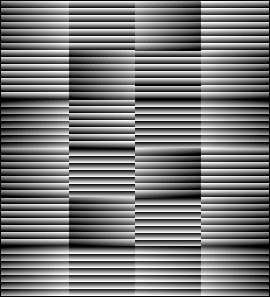
the transparent
tape music festival
january 11th and 12th, 8pm
7$ per night and 12$ for both nights
at the transparent theater
located on the n.e. corner of ashby and martin luther king jr. blvd, berkeley
directly across the street from the ashby BART parking lot.
presented by the
new san francisco tape music center
in conjunction with acme observatory and transparent theatre
e-mail tapecenter@sfsound.org or call 415.614.2434 for more info.
- program and notes -
read an east bay express article on the festival!
What is Tape Music??
It is a bit paradoxical to use the word traditionally with a practice of the avant garde -- but, traditionally the words tape music have referred to the target media of a new kind of music. This new kind of music is not composed for arbitration by a pianist and the piano, so it must not be piano music. . . not for the string quartet, not for the orchestra, not even for the rock 'n roll band.
Music Composed for Tape
The idea of a music composed for a fixed medium, while perhaps starting down a path, does not really lead us to a fundamentally new art. If the only criteria for differentiating tape music from all other musics is the fixed delivery medium -- magnetic tape, vinyl, CD, miniDisc -- then our thought has just led us to all industrialized forms of music, so called "popular" and "classical". When this is our only standard, we discover tape music is actually the foremost music of our time. The kids love it, the moms subdue their road-rage with it, the dads sing tunelessly with it, and so on.
Music Composed by Tape Recording
With the advent of optical-film sound recording in the 1920s, artist/filmmaker Walter Ruttmann exclaimed "Everything audible in the world becomes material!" All sound becomes music. Hildegard Westerkamp's cricket in a Mexican desert becomes music. Through Yves Doust, the squeaking of a child's swing becomes music. By the microphone of Cliff Caruthers', a sojourner's footsteps become music. "Un-musical" sounds such as these do not necessarily define a new music -- Ottorino Respighi's Pines of Rome remains music of the 19th century even with the addition of chirping gramophonic birds. But these sounds do demand a new art.
Music Composed by Taping Tape Recordings Together
Varese's "organized sound" begins to be heard when all these "un-musical" noises are taped together. But as Ruttmann has already noted, all sound is suitable -- even the "musical". A forgotten mambo by Damaso Perez Prado is snipped, cut apart, and then glued back together by Javier Alvarez. Antti Saario muses on the discarded tape cuttings of a failed "garage band". John Cage is taken at his word, and tapes of his words and music are put to scissors and glue by Joseph Anderson.
And then there are the impossible melodies of Alistair MacDonald, the pacific harmonies of Thom Blum, the unmentionable surprises of Ma++ Ingalls. . . . these are the sounds of the new art.
back to nsftmc
